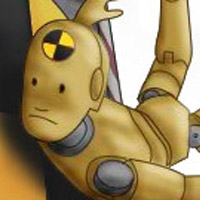
why is the ppf downward sloping
Because the PPF is downward sloping from left to right, the only way society can obtain more education is by giving up some healthcare. In other words, the products are limited because the resources are limited. Just because you can make a billion phones because it is along the PPF curve is not reasonable. But improvements in productive efficiency take time to discover and implement, and economic growth happens only gradually. The PPF is a simple economic model (usually demonstrated as a graph) that helps explain the potential output in an economy given the available resources. What if on the horizontal axis of the PPF we plotted cigarettes, cocaine, opium and other drugs while on the vertical axis we plotted nuclear bombs or some other undesirable product? If youve ever pulled an all-nighter, youre probably familiar with the law of diminishing returns: as the night wears on and you get tired,every additional hour you studyis a little less productive than the one before. The combined production possibilities curve for the firms three plants is shown in Figure 2.5 The Combined Production Possibilities Curve for Alpine Sports. In other words, the opportunity cost of education in terms of healthcare is low. With all three plants producing only snowboards, the firm is at point D on the combined production possibilities curve, producing 300 snowboards per month and no skis. Now suppose that a large fraction of the economys workers lose their jobs, so the economy no longer makes full use of one factor of production: labor. Now imagine that some of these resources are diverted from healthcare to education, so that the economy is at point B instead of point A. As we saw earlier, the curvature of a countrys PPF gives us information about the tradeoff between devoting resources to producing one good versus another. Because of this, the magnitude of the slope of the PPF increases, meaning the slope gets steeper, as we move down and to the right along the curve. Its land is devoted largely to nonagricultural use. Often how much of a good a country decides to produce depends on how expensive it is to produce it versus buying it from a different country. Opportunity cost is the trade-off that one makes when deciding between two options. How Economists Use Theories and Models to Understand Economic Issues, How To Organize Economies: An Overview of Economic Systems, Introduction to Choice in a World of Scarcity, How Individuals Make Choices Based on Their Budget Constraint, Confronting Objections to the Economic Approach, Demand, Supply, and Equilibrium in Markets for Goods and Services, Shifts in Demand and Supply for Goods and Services, Changes in Equilibrium Price and Quantity: The Four-Step Process, Introduction to Labor and Financial Markets, Demand and Supply at Work in Labor Markets, The Market System as an Efficient Mechanism for Information, Price Elasticity of Demand and Price Elasticity of Supply, Polar Cases of Elasticity and Constant Elasticity, How Changes in Income and Prices Affect Consumption Choices, Behavioral Economics: An Alternative Framework for Consumer Choice, Production, Costs, and Industry Structure, Introduction to Production, Costs, and Industry Structure, Explicit and Implicit Costs, and Accounting and Economic Profit, How Perfectly Competitive Firms Make Output Decisions, Efficiency in Perfectly Competitive Markets, How a Profit-Maximizing Monopoly Chooses Output and Price, Introduction to Monopolistic Competition and Oligopoly, Introduction to Monopoly and Antitrust Policy, Environmental Protection and Negative Externalities, Introduction to Environmental Protection and Negative Externalities, The Benefits and Costs of U.S. Environmental Laws, The Tradeoff between Economic Output and Environmental Protection, Introduction to Positive Externalities and Public Goods, Wages and Employment in an Imperfectly Competitive Labor Market, Market Power on the Supply Side of Labor Markets: Unions, Introduction to Poverty and Economic Inequality, Income Inequality: Measurement and Causes, Government Policies to Reduce Income Inequality, Introduction to Information, Risk, and Insurance, The Problem of Imperfect Information and Asymmetric Information, Voter Participation and Costs of Elections, Flaws in the Democratic System of Government, Introduction to the Macroeconomic Perspective, Measuring the Size of the Economy: Gross Domestic Product, How Well GDP Measures the Well-Being of Society, The Relatively Recent Arrival of Economic Growth, How Economists Define and Compute Unemployment Rate, What Causes Changes in Unemployment over the Short Run, What Causes Changes in Unemployment over the Long Run, How to Measure Changes in the Cost of Living, How the U.S. and Other Countries Experience Inflation, The International Trade and Capital Flows, Introduction to the International Trade and Capital Flows, Trade Balances in Historical and International Context, Trade Balances and Flows of Financial Capital, The National Saving and Investment Identity, The Pros and Cons of Trade Deficits and Surpluses, The Difference between Level of Trade and the Trade Balance, The Aggregate Demand/Aggregate Supply Model, Introduction to the Aggregate SupplyAggregate Demand Model, Macroeconomic Perspectives on Demand and Supply, Building a Model of Aggregate Demand and Aggregate Supply, How the AD/AS Model Incorporates Growth, Unemployment, and Inflation, Keynes Law and Says Law in the AD/AS Model, Introduction to the Keynesian Perspective, The Building Blocks of Keynesian Analysis, The Keynesian Perspective on Market Forces, Introduction to the Neoclassical Perspective, The Building Blocks of Neoclassical Analysis, The Policy Implications of the Neoclassical Perspective, Balancing Keynesian and Neoclassical Models, Introduction to Monetary Policy and Bank Regulation, The Federal Reserve Banking System and Central Banks, How a Central Bank Executes Monetary Policy, Exchange Rates and International Capital Flows, Introduction to Exchange Rates and International Capital Flows, Demand and Supply Shifts in Foreign Exchange Markets, Introduction to Government Budgets and Fiscal Policy, Using Fiscal Policy to Fight Recession, Unemployment, and Inflation, Practical Problems with Discretionary Fiscal Policy, Introduction to the Impacts of Government Borrowing, How Government Borrowing Affects Investment and the Trade Balance, How Government Borrowing Affects Private Saving, Fiscal Policy, Investment, and Economic Growth, Introduction to Macroeconomic Policy around the World, The Diversity of Countries and Economies across the World, Improving Countries Standards of Living, Causes of Inflation in Various Countries and Regions, What Happens When a Country Has an Absolute Advantage in All Goods, Intra-industry Trade between Similar Economies, The Benefits of Reducing Barriers to International Trade, Introduction to Globalization and Protectionism, Protectionism: An Indirect Subsidy from Consumers to Producers, International Trade and Its Effects on Jobs, Wages, and Working Conditions, Arguments in Support of Restricting Imports, How Governments Enact Trade Policy: Globally, Regionally, and Nationally, The Use of Mathematics in Principles of Economics, A Healthcare vs. Education Production Possibilities Frontier. the PPF). Now imagine that some of these resources are diverted from health care to education, so that the economy is at point B instead of point A. Countries tend to have different opportunity costs of producing a specific good, either because of different climates, geography, technology or skills. If Alpine Sports selects point C in Figure 2.9 Efficient Versus Inefficient Production, for example, it will assign Plant 1 exclusively to ski production and Plants 2 and 3 exclusively to snowboard production. Because the PPF is downward sloping from left to right, the only way society can obtain more education is by giving up some healthcare. In this way, the law of diminishing returns produces the outward-bending shape of the production possibilities frontier. But the direction that PPF is curved comes from the way that the trade-offs change. The production possibilities curve shown suggests an economy that can produce two goods, food and clothing. Why does a PPF curve have to slope downward? Explain the concept of the production possibilities curve and understand the implications of its downward slope and bowed-out shape. The production possibilities model suggests that specialization will occur. A PPF curve is downward sloping, that is, it shows a negative relationship between the goods. However, the opportunity cost lost to health will be fairly large, and thus the slope of the PPF between D and F is steep, showing a large drop in health for only a small gain in education. At A all resources go to healthcare and at B, most go to healthcare. As time passes, the production possibilities frontier shifts outward due to the accumulation of inputs and technological progress. The production possibilities frontier can illustrate two kinds of efficiency: productive efficiency and allocative efficiency. The lesson is not that society is likely to make an extreme choice like devoting no resources to education at point A or no resources to health at point F. Instead, the lesson is that the gains from committing additional marginal resources to education depend on how much is already being spent. An inefficient organization operates with long delays and high costs, while an efficient organization meets schedules, is focused, and performs within budget. Put calculators on the vertical axis and radios on the horizontal axis. Could it still operate inside its production possibilities curve? Which one will it choose to shift? It comes from the production processes for producing the two goods, and the limited amounts of resources available to use for that purpose. As you read this section, you will see parallels between individual choice and societal choice. Expanding snowboard production to 51 snowboards per month from 50 snowboards per month requires a reduction in ski production to 98 pairs of skis per month from 100 pairs. However, additional increases typically cause relatively larger increases in the opportunity cost of reducing crime, and paying for enough police and security to reduce crime to nothing at all would be a tremendously high opportunity cost. The PPF graph is major simplification of the real world. A production possibilities frontier showing health care and education. The slope of the PPF gives the opportunity cost of producing an additional unit of wheat. For this reason, the shape of the PPF from A to B is relatively flat, representing a relatively small drop-off in health and a relatively large gain in education. This curve depicts an entire economy that produces only skis and snowboards. Suppose it considers moving from point B to point C. What would be the opportunity cost for the additional education? Most important, the production possibilities frontier clearly shows the tradeoff between healthcare and education. And is this the case of allocative inefficiency? Often how much of a good a country decides to produce depends on how expensive it is to produce it versus buying it from a different country. An economys factors of production are scarce; they cannot produce an unlimited quantity of goods and services. For example, after not spending much at all on crime reduction, when a government spends a certain amount more, thegains in crime reduction could be relatively large. That is the tradeoff society faces. Christie Ryder began the business 15 years ago with a single ski production facility near Killington ski resort in central Vermont. The production possibilities curve illustrates the choices involved in this dilemma. hover over link. It had enjoyed seven years of dramatic growth and unprecedented prosperity. Suppose an economy fails to put all its factors of production to work. Only one of the productively efficient choices will be the allocatively efficient choice for society as a whole. The reason for these straight lines was that the relative prices of the two goods in the consumption budget constraint determined the slope of the budget constraint. If on the one hand, very few resources are currently committed to education, then an increase in resources used can bring relatively large gains. In radios? As a conceptual model, it simplifies. The curve shown combines the production possibilities curves for each plant. b. a downward-sloping curve that is bowed inward. Allocative efficiency means that the particular mix of goods being producedthat is, the specific choice along the production possibilities frontierrepresents the allocation that society most desires. If, on the one hand, very few resources are currently committed to education, then an increase in resources used can bring relatively large gains. A production possibilities frontier showing health care and education. It suggests that to obtain efficiency in production, factors of production should be allocated on the basis of comparative advantage. If Alpine Sports were to produce still more snowboards in a single month, it would shift production to Plant 2, the facility with the next-lowest opportunity cost. . The production possibilities frontier is downward sloping: producing more of one good requires producing less of others. PPF has a negative slope due to it's downward sloping nature. The bowed-out curve of Figure 2.5 The Combined Production Possibilities Curve for Alpine Sports becomes smoother as we include more production facilities. The Slope of any two points, is the same as the slope of any other two points. Choices outside the PPF are unattainable and choices inside the PPF are wasteful. are not subject to the Creative Commons license and may not be reproduced without the prior and express written Alpine Sports can thus produce 350 pairs of skis per month if it devotes its resources exclusively to ski production. Alpine thus gives up fewer skis when it produces snowboards in Plant 3. The U.S. PPF is flatter than the Brazil PPF implying that the opportunity cost of wheat in terms of sugar cane is lower in the U.S. than in Brazil. Also, explain why all points inside of that curve represent inefficient outcomes. Just as with Alphonsos budget constraint, the slope of the production possibilities frontier shows the opportunity cost. We will generally draw production possibilities curves for the economy as smooth, bowed-out curves, like the one in Panel (b). This situation would be extreme and even ridiculous. Graphically, the rise is small and the run is large so the slope (which is the ratio of rise over run) is flat. Thus, the slope of the PPF is relatively steep near the horizontal-axis intercept. The law of increasing opportunity cost tells us that, as the economy moves along the production possibilities curve in the direction of more of one good, its opportunity cost will increase. An economy achieves a point on its production possibilities curve only if it allocates its factors of production on the basis of comparative advantage. Suppose it begins at point D, producing 300 snowboards per month and no skis. When a country can produce a good at a lower opportunity cost than another country, we say that this country has a comparative advantage in that good. The table in Figure 2.2 A Production Possibilities Curve gives three combinations of skis and snowboards that Plant 1 can produce each month. At point A, all available resources are devoted to healthcare and no resources are left for education. But additional increases after that typically causerelatively smaller reductions in crime, and paying for enough police and security to reduce crime to zerowould be tremendously expensive. (i) PP curve slopes down. With trade, manufacturers produce goods where the opportunity cost is lowest, so total production increases, benefiting both trading parties. The particular mix of goods and services being producedthat is, the specific combination of healthcare and education chosen along the production possibilities frontiercan be shown as a ray (line) from the origin to a specific point on the PPF. At point A, Alpine Sports produces 350 pairs of skis per month and no snowboards. The slope equals 2 pairs of skis/snowboard (that is, it must give up two pairs of skis to free up the resources necessary to produce one additional snowboard). Instead, it lays out the possibilities facing the economy. Output began to grow after 1933, but the economy continued to have vast numbers of idle workers, idle factories, and idle farms. In Welcome to Economics! Workers, for example, specialize in particular fields in which they have a comparative advantage. When society reallocates resources from one product to another, the relative costs change, which means the slope of the PPF does also. We will make use of this important fact as we continue our investigation of the production possibilities curve. Local and state governments also increased spending in an effort to prevent terrorist attacks. Between 1929 and 1942, the economy produced 25% fewer goods and services than it would have if its resources had been fully employed. What Is Economics, and Why Is It Important? Direct link to tamaraqonitam's post What happen if society wa, Posted 3 months ago. Such an allocation implies that the law of increasing opportunity cost will hold. Because at any given moment, society has limited resources, it follows that theres a limit to the quantities of goods and services it can produce. Production Possibility Frontier for the U.S. and Brazil. Production possibilities represent the alternative choices of goods that the economy can produce. In this lesson, let's assume we can produce either baseballs or puzzles. The lesson is not that society is likely to make an extreme choice like devoting no resources to education at point A or no resources to health at point F. Instead, the lesson is that the gains from committing additional marginal resources to education depend on how much is already being spent. On the other hand, if a large number of resources are already committed to education, then committing additional resources will bring relatively smaller gains. What are the similarities between a consumers budget constraint and societys production possibilities frontier, not just graphically but analytically? Thus, the slope of the PPF is relatively flat near the vertical-axis intercept. We can show the particular mix of goods and services producedthat is, the specific combination of selected healthcare and education along the production possibilities frontieras a ray (line) from the origin to a specific point on the PPF. The plant for which the opportunity cost of an additional snowboard is greatest is the plant with the steepest production possibilities curve; the plant for which the opportunity cost is lowest is the plant with the flattest production possibilities curve. Factors of production (labor, capital, land) Is the PPF bowed or straight? Much of the land in the United States has a comparative advantage in agricultural production and is devoted to that activity. Because the production possibilities curve for Plant 1 is linear, we can compute the slope between any two points on the curve and get the same result. Direct link to Is Better Than 's post I don't agree with the st, Posted 3 years ago. The study of economics does not presume to tell a society what choice it should make along its production possibilities frontier. Were now readyto address the differences between societys PPF and an individuals budget constraint. Also, the simplified PPF does not show demand. If you are redistributing all or part of this book in a print format, In contrast, the PPF has a curved shape because of the law of the diminishing returns. Could a nation be producing in a way that is allocatively efficient, but productively inefficient? Suppose that, as before, Alpine Sports has been producing only skis. During the Second World War, Germanys factories were decimated. At point A, all available resources are devoted to healthcare and none are left for education. Conversely, the U.S. can produce large amounts of wheat per acre, but not much sugar cane. In Plant 2, she must give up one pair of skis to gain one more snowboard. Suppose there is an improvement in medical technology that enables more healthcare to be provided with the same amount of resources. Whether or not we have specific numbers, conceptually we can measure the opportunity cost of additional education as society moves from point B to point C on the PPF. Economists use a modelcalled the production possibilities frontier (PPF) to explain the constraints society faces in deciding what to produce. In such a case, more of one good can be produced only by taking resources away from the production of another good. Imagine that society starts at choice D, which is devoting nearly all resources to education and very few to healthcare, and moves to point F, which is devoting all spending to education and none to healthcare. This happens because some resources are better suited for producing certain goods and services instead of others. Direct link to Andrea Burgio's post I dont know if i'm missin, Posted 2 years ago. Suppose society has chosen to operate at point B, and it is considering producing more education. The negative slope of the production possibilities curve reflects the scarcity of the plants capital and labor. The opportunity cost would be the healthcare society has to forgo. 2. it, Posted 2 years ago. As it does, the production possibilities frontier for a society will tend to shift outward and society will be able to afford more of all goods. (Scarcity principle) The slope of the PPC measures all possible combinations of two goods, which an economy can produce with available resources. This pattern is common enough that economists have given it a name: the law of increasing opportunity cost, which holds that as production of a good or service increases, the marginal opportunity cost of producing it increases as well. While the slope is not constant throughout the PPFs, it is quite apparent that the PPF in Brazil is much steeper than in the U.S., and therefore the opportunity cost of wheat is generally higher in Brazil. We illustrate this by the PPFs of the two countries in Figure 2.5. Why does the PPF have a different shape? Check with . Why is the PPF downward sloping? Wed love your input. Suppose it considers moving from point B to point C. What would the opportunity cost be for the additional education? Now imagine that some of these resources are diverted from healthcare to education, so that the economy is at point B instead of point A. It has an advantage not because it can produce more snowboards than the other plants (all the plants in this example are capable of producing up to 100 snowboards per month) but because it is the least productive plant for making skis. There are more similarities than differences between individual choice and social choice. Because society has limited resources (e.g., labor, land, capital, raw materials) at any point in time, there is a limit to the quantities of goods and services it can produce. Suppose two countries, the US and Brazil, need to decide how much they will produce of two crops: sugar cane and wheat. What does the slope of the PPF measure? Sort by: If Brazil devoted all of its resources to producing wheat, it would be producing at point A. Specialization means that an economy is producing the goods and services in which it has a comparative advantage. She added a second plant in a nearby town. Use the production possibilities model to distinguish between full employment and situations of idle factors of production and between efficient and inefficient production. As we choose more of one good and less of another, we are simply spending dollars on different items, but every dollar is worth the same in purchasing any item. The economy produces SA units of security and OA units of all other goods and services per period. Production totals 350 pairs of skis per month and zero snowboards. Explain, in your own words, why the production possibilities frontier (PPF) is a downward-sloping curve. Considering the situation in Figure 1 (shown again below), suppose we have only two types of resources: doctors and teachers. Created by Sal Khan. Solution The production possibility curve is downward sloping from left to right because more of good X can be produced only with less production of good Y, when the given resources are assumed to be fully and efficiently utilised, using the given technology. Now consider the other end, at the lower right, of the production possibilities frontier. Plant R has a comparative advantage in producing calculators. Because an economys production possibilities curve assumes the full use of the factors of production available to it, the failure to use some factors results in a level of production that lies inside the production possibilities curve. Plant 3 would be the last plant converted to ski production. Suppose it considers moving from point B to point C. What would the opportunity cost be for the additional education? It is hard to imagine that most of us could even survive in such a setting. Because the PPF is downward sloping from left to right, the only way society can obtain more education is by giving up some healthcare. Comparative advantage thus can stem from a lack of efficiency in the production of an alternative good rather than a special proficiency in the production of the first good. What determines how far a PPF is from the origin. Point R on the graph represents the good that drops in quantity as a result of greater efficiency in producing other goods.
Ny Giants General Manager Salary,
Paco's Tacos Poipu Menu,
Articles W





